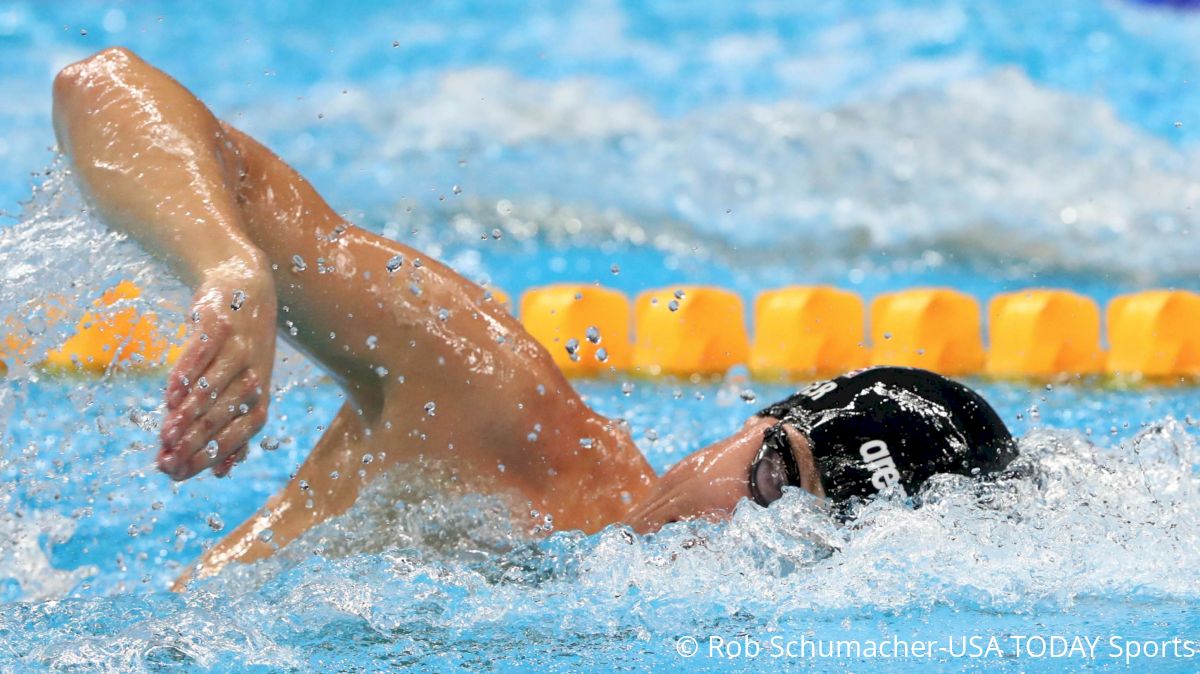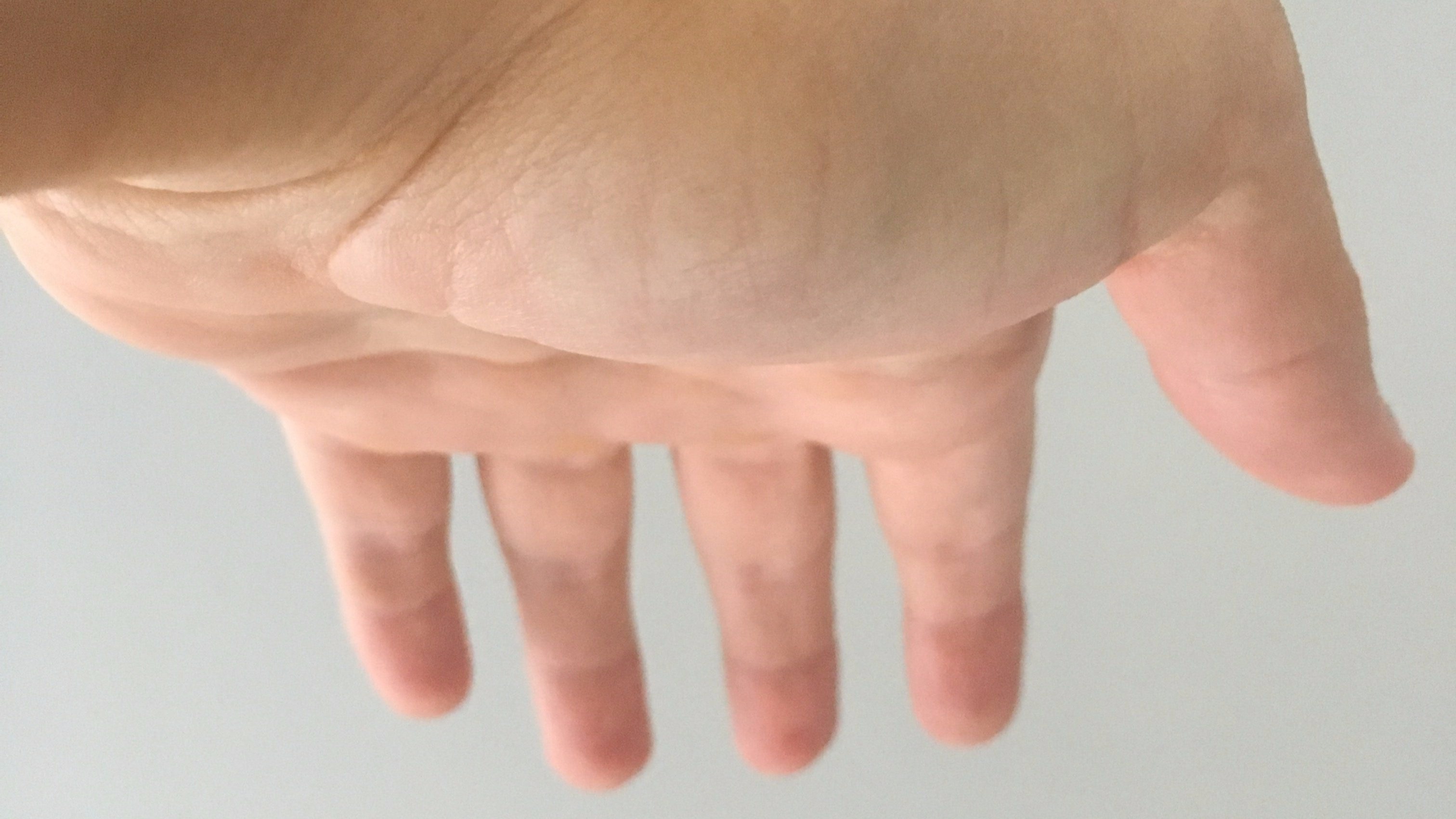Power Of The Pinky Finger In Swimming, Part III
Power Of The Pinky Finger In Swimming, Part III
In Part III of our series on the pinky finger, we analyze how it affects a swimmers kick.

Welcome to our third and final segment about the amazing impact the pinky finger can have in swimming! This week we are going to dive even deeper into how your pinky fingers affect your lower extremities.
In case you missed Part I or Part II of this series, I would highly recommend reading those posts first to have a better understanding of Part III.
Last week we introduced the posterior oblique system (POS). (Yes, it's definitely a better idea to read Part I and Part II if you haven't before continuing on.)
Once again, the POS system is composed of the gluteus maximus, latissimus dorsi, and thoracolumbar fascia. The POS system is affected by the pinky finger because it is fascially connected to the pinky via the Ulnar Periosteum (and the Ulnar Nerve). The pinky plays a role in the firing of this subsystem through the ulnar nerve.
To better understand how the POS system could possible affect a swimmer's kick, we must understand one of the other three subsystems. The POS system works synergistically with the Deep Longitudinal Subsystem (DLS). The DLS is composed of erector spinae, thoracolumbar fascia, sacrotuberous ligament, and bicep femoris. Simplistically, the DLS transfers force from the foot to the trunk and vice versa. When the POS system works in combination with the DLS system they both help distribute the forces created through rotational activities.
Freestyle is a rotational stroke. Swimmer's rotate around their longitudinal axis to create the speed and power necessary to get them up and down the pool. When discussing the pinky's role in a swimmer's kick, one must remember that the pinky of whatever hand is indirectly connected to the opposing gluteus maximus (the muscle in your bottom) -- i.e. your right-hand pinky is connected to your left glute and vice versa.
When a swimmer hand enters the water at the top of their freestyle stroke, a connection between the hand and lower body is made (through the POS system). Ideally, if a swimmer is entering the water with their right hand, their left leg should be kicking down. In order to augment the force created by this left leg kick, the pinky needs to be flexed and slightly cupped at entry.
If we take this even a step further -- as a swimmer's right hand starts moving backwards (during the freestyle pull), the body will be rotating from its left side back towards the stomach.
If you remember from earlier that when you combine the POS system with the DLS, they work together to transmit the forces created through rotational motion. If the POS system sends a greater force to the opposing glute muscle (through pinky activation), the DLS system then sends that greater force (along with any extra force created from the rotation) down to the feet. This means that every single kick happening in conjunction and after the hand enters the water will be stronger due to pinky activation throughout the swimmer's pull.
In conclusion, if a swimmer enters the water with the right hand flexed and slightly cupped backward, their kick on their left leg will be stronger. But more importantly, every kick after that initial kick will be more powerful due to the continued pinky activation and the DLS system distributing the rotational forces.
1) Flex and slightly cup your fingers backwards throughout your freestyle pull (see images)
2) Rotate side to side


By Abbie Fish
---
In case you missed Part I or Part II of this series, I would highly recommend reading those posts first to have a better understanding of Part III.
Last week we introduced the posterior oblique system (POS). (Yes, it's definitely a better idea to read Part I and Part II if you haven't before continuing on.)
Once again, the POS system is composed of the gluteus maximus, latissimus dorsi, and thoracolumbar fascia. The POS system is affected by the pinky finger because it is fascially connected to the pinky via the Ulnar Periosteum (and the Ulnar Nerve). The pinky plays a role in the firing of this subsystem through the ulnar nerve.
To better understand how the POS system could possible affect a swimmer's kick, we must understand one of the other three subsystems. The POS system works synergistically with the Deep Longitudinal Subsystem (DLS). The DLS is composed of erector spinae, thoracolumbar fascia, sacrotuberous ligament, and bicep femoris. Simplistically, the DLS transfers force from the foot to the trunk and vice versa. When the POS system works in combination with the DLS system they both help distribute the forces created through rotational activities.
Freestyle is a rotational stroke. Swimmer's rotate around their longitudinal axis to create the speed and power necessary to get them up and down the pool. When discussing the pinky's role in a swimmer's kick, one must remember that the pinky of whatever hand is indirectly connected to the opposing gluteus maximus (the muscle in your bottom) -- i.e. your right-hand pinky is connected to your left glute and vice versa.
When a swimmer hand enters the water at the top of their freestyle stroke, a connection between the hand and lower body is made (through the POS system). Ideally, if a swimmer is entering the water with their right hand, their left leg should be kicking down. In order to augment the force created by this left leg kick, the pinky needs to be flexed and slightly cupped at entry.
But here's the kicker:
If we take this even a step further -- as a swimmer's right hand starts moving backwards (during the freestyle pull), the body will be rotating from its left side back towards the stomach.
If you remember from earlier that when you combine the POS system with the DLS, they work together to transmit the forces created through rotational motion. If the POS system sends a greater force to the opposing glute muscle (through pinky activation), the DLS system then sends that greater force (along with any extra force created from the rotation) down to the feet. This means that every single kick happening in conjunction and after the hand enters the water will be stronger due to pinky activation throughout the swimmer's pull.
In conclusion, if a swimmer enters the water with the right hand flexed and slightly cupped backward, their kick on their left leg will be stronger. But more importantly, every kick after that initial kick will be more powerful due to the continued pinky activation and the DLS system distributing the rotational forces.
How do I get the most power out of my freestyle kick?
1) Flex and slightly cup your fingers backwards throughout your freestyle pull (see images)
2) Rotate side to side


By Abbie Fish
---